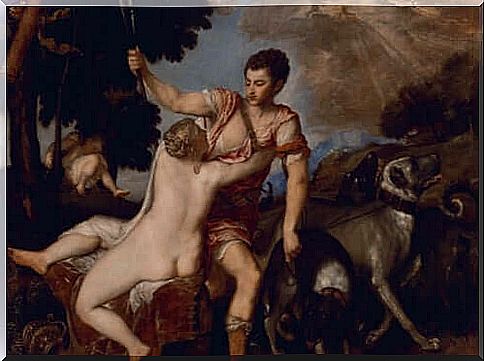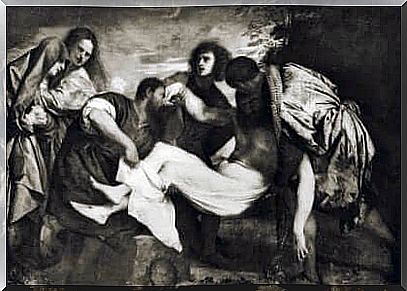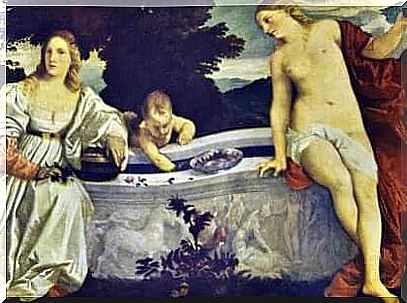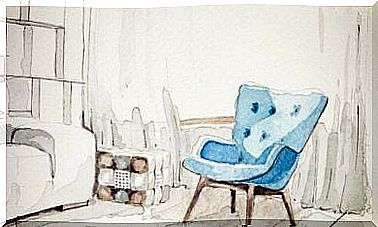Titian: The Biography Of The Great Venetian Painter

According to art critics and historians such as Arnold Hauser and Ernst Gombrich, Titian had a very significant influence on the art world. From a young age he was recognized as a great painter.
In his portraits, Titian was able to capture the depth of the human spirit. In his religious paintings, too, he covered the whole range of human emotions, from the charm of young Madonnas to the deep tragedy of the crucifixion and burial.
In his mythological paintings he captured the joy and abandonment of the pagan world. In addition, his nudes set a new standard for physical beauty and eroticism that has not been surpassed to this day. This is especially true for Venus ( Venus and Adonis ) and Danaë ( Danaë with nanny).
In addition, many art critics admire his masterful use of color. It is undisputed that his work and his artistry have significantly influenced many subsequent generations of artists. The work of great masters like Rubens and Nicolas Poussin is the best proof of the truth of the saying “Imitation is the most sincere form of recognition”.

The childhood of Titian
Tiziano Vecellio, better known as Titian, was probably born between 1488 and 1490 in Pieve di Cadore, an Italian village near Belluno. However, his exact date of birth is not known.
He spent the first years of his life with his parents Gregorio and Lucia Vecellio in his birthplace. He was the oldest of 5 children.
His father was a respected councilor and soldier. He was also the superintendent of the Pieve di Cadore castle and manager of the local mines.
There were many notaries in Titian’s family and his grandfather also practiced this profession. It is therefore not surprising that his family was well off in the region.
When Titian was 10 years old, his parents sent him to Venice with his brother Francesco. The two should live with their uncle. Shortly after the brothers arrived in Venice, they both went as apprentices to the famous mosaic artist Sebastiano Zuccato. It was there that Titian discovered his artistic talent.
A few years later, Titian went to Giovanni Bellini’s studio. Bellini was a recognized Venetian painter. The first generation of painters of the Venetian school came from his studio: Giovanni Palma di Serinalta, Lorenzo Lotto, Sebastiano Luciani and Giorgio da Castelfranco.
His first masterpieces
The Hercules fresco in the Morosini Palace is believed to be one of the first paintings by Titian. Other early works are The Virgin and Child, which is in Vienna and Visitation of Mary and Elisabeth , which can be seen today in the Gallerie dell’Accademia in Venice.
In 1508 he laid the foundation for his great career with the creation of the frescoes in the Fondaco dei Tedeschi in Venice, which were created in collaboration with Giorgione di Castelfranco, another student of Bellini.
On this commission, the main scene assigned to Titian was the Allegory of Justice . Unfortunately, only the destroyed outlines of these frescoes have survived. Since Tizian and di Castelfranco worked very closely together, it is often difficult to distinguish between their works, which were created at the beginning of the 16th century.
In addition, these two young painters were the leading artists of the new school of “modern art”. This type of art was characterized by a more flexible painting style, as there were no rules regarding symmetry or other formalities. In contrast, Bellini continued to paint in the classical style.
After Giorgione’s early death in 1510, Titian continued to paint in the traditional style for a while. However, he gradually began to develop his own style. This was particularly characterized by bold and expressive brushstrokes.
In 1511 Titian received his first commission, which he carried out alone as an artist: the frescoes of the miracles of St. Anthony of Padua . Many art critics rate The Miracle of the Speaking Newborn as the best of these frescoes.
Titian’s illustrious career
After the death of Giovanni Bellini in 1516, Titian remained in the Venetian school without any real competition. This made him the undisputed master of Venetian painting for sixty years. In addition, Titian received a pension from the Senate for being the successor to Bellini.
Between 1516 and 1530, Titian changed and perfected his own style. He also dropped his “Giorgionesque” style and worked on increasingly broader and more complex topics. During this period he also began developing a more monumental style.
In 1518 he painted his masterpiece for the main altar of the Santa Maria Gloriosa dei Frari church in Venice: Assumption of the Virgin . This extraordinary work, which is unique in Italy because of its color scheme and its size, continues to inspire the art world to this day.
Titian became increasingly famous, peaking his career and popularity in 1521. Although he was previously a respected painter, the demand for his work was particularly high during this period.
The death of the holy martyr Peter
One of his most extraordinary pictures, The Death of the Holy Martyr Peter, was painted by Titian in 1530. Unfortunately, it was destroyed in 1867, which is why only copies of the original have survived today. In this work, he combined extreme violence with a landscape consisting mainly of a large tree that pierced the scene. This accentuated this drama in a baroque way.
At the same time, the artist was working on a series of small Madonnas, which he painted in a beautiful pastoral landscape. During this creative phase, Titian also painted mythological scenes. One of his most famous mythological works, Bacchanal the Andrians , hangs today in the Prado in Madrid. It is believed to be one of the most outstanding works of art in Renaissance pagan culture.

Titian’s extraordinary wealth
When Titian met Emperor Charles V of the Holy Roman Empire in Bologna in 1530, it was a very significant moment in his life. He painted the life-size portrait of the ruler in a style that was extremely innovative for the time.
Titian quickly advanced to become the main painter at the imperial court. This position earned him numerous privileges, honors and titles. From then on he was the most popular court painter in all of Europe.
In addition, Titian knew very well how to win the favor and esteem of the rich and powerful. Of course, he was extraordinarily talented, and his paintings were distinguished by their conceptual subtlety and beauty. However, he was also very popular with everyone because of his charming personality.
Portraits of the rich and famous
The large number of portraits that the mighty possessed is further evidence of his fame and popularity. No other artist of his time painted more portraits than him. However, it is believed that it was often his students who made these portraits and not the great master himself.
D’Avalos, Marquis of Vasto, paid Titian a generous pension. Charles V also paid him a considerable sum every year. Another source of income was a contract from 1542 with his birthplace Cadore. He visited it almost every year and the people there valued his generosity and influence.
His favorite villa was in the neighboring hills of Manza. There he studied the form and effect of the landscape for his paintings. Titian’s mill, which can be seen in many of his paintings, was in Collontola, near Belluno.
Titian’s private life
In 1525 Tizian married Cecilia, the daughter of a hairdresser. Shortly after the wedding, their son Pomponio was born, and two more children followed later. Titian’s favorite son, Orazio, later became his assistant.
At some point in 1526, Titian met Pietro Aretino and a close friendship developed between the two. Pietro was an influential and flamboyant character who played an important role in the culture and politics of the time. Titian portrayed him at least three times and sent one of the portraits to Gonzaga to the Duke of Mantua.
After Cecilia died in 1530, Titian remarried. From this marriage a daughter named Lavinia was born. However, his second wife also died. Then his sister Orsa took off Cadore to him and helped him to keep house and care for the children.
Titian’s death
When Venice was struck by the plague, Titian was already 90 years old. He too died on August 27, 1576 of the aftermath of the plague. He grew very old and was the only victim of the plague epidemic in Venice to receive a church funeral. He was buried in the church of Santa Maria Gloriosa dei Frari.
His tomb was very close to his famous painting, The Pesaro Madonna. At that time, however, the grave could not be seen. It was not until much later that Canova erected a large monument at the instigation of the Austrian rulers of Venice, which can still be seen there today.
Titian’s religious paintings were true paradigms of devotional painting. Her strength and expression touched the hearts of believers in a way that few other paintings have ever done. At the same time, his mythological motifs also made him an extraordinary erotic painter. These works touched and moved people for completely different reasons than his religious paintings.









